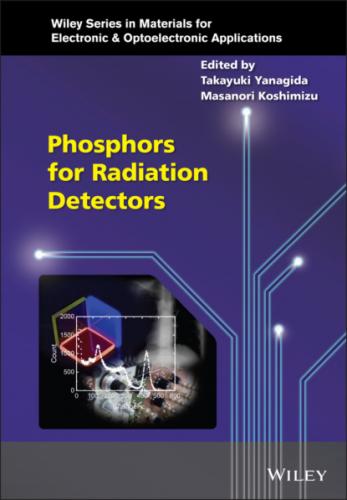In an ideal scintillation detector, energy response (signal output intensity vs. incident radiation energy) should have a simple proportional relationship; however, the energy responses of actual detectors are not simple. The main reason is a non‐proportional energy response of scintillators. Figure 1.6 (top) shows a non‐proportional response plot, which shows a relationship between relative light output (pulse height) per unit energy and irradiated γ‐ray energy. Although Eu‐doped SrI2, Ce‐doped CLYC, and Pr‐doped LuAG show a relatively flat response against γ‐ray energy, BaF2, Ce‐doped GAGG, and Tl‐doped NaI exhibit a large fluctuation against γ‐ray energy. When we use the latter three types of scintillators as actual detectors, we must apply the gain correction function to measure the energy accurately. The main origin of the non‐proportional response is considered as related to the K‐edge of the main element of scintillator. This was first pointed out in Ce‐doped GSO [67]. Now, we understand that the flat response against γ‐ray energy is required to achieve high energy resolution. In practical scintillation detectors, we generally use a function between γ‐ray energy and pulse height, as shown in the bottom of Figure 1.6. In a simple case, we fit the relationship by a linear function with the least squares method, and the bottom panel in the bottom of Figure 1.6 shows the residual from linear fitting at each energy. After we prepare such a fitting function, we can convert pulse height channel to energy of ionizing radiation focused on each measurement. Although these two figures have the same physical meaning, people in basic science prefer a non‐proportionality plot, and those using the actual detector prefer a linearity plot.
Figure 1.6 (Top) Relationship between the scintillation decay time (ns) and emission wavelength (nm) and (bottom) relationship betweenγ‐ray energy and photoabsorption peak channel.
1.3.4 Timing Properties
Timing properties are also important for scintillation detectors, and depend on the rise and decay times of scintillators and photodetectors. Generally, we analyze the decay time profile by the sum of multi exponential functions, which can be understood as a typical rate equation. Here, we assume radiative and non‐radiative rate constants of kr and knr, respectively. N(t) is the number of excited states, and it shows a relaxation with a rate of –ΔNr during a very short time of Δt. This can be formulated as
The number of the decrease of excited states –ΔNnr is expressed as
Totally, the decrease of the excited states –ΔN is a sum of Equations (1.20) and (1.21), and it can be expressed as
(1.22)
Thus, we can obtain
(1.23)
We can solve this differential equation as
(1.24)
where N0 means the number of luminescence centers at t = 0. If we define kr + knr = 1/τ, we can obtain a typical decay time function for the analysis. Unlike the case of the decay time, the common confirmed analysis method for the rise time has not yet been constructed. One of the problems with the rise time is that it is too fast for typical photodetectors and irradiation sources to observe. Except for scintillators with very slow rise times, the typical rise time is in the order of ~ps, and it is technically difficult to detect such a fast phenomenon.
To date, unlike the situation of scintillation light yield, no widely accepted and confirmed model has been constructed. We apply a common model of PL to understand the scintillation phenomenon. The common relationship between scintillation decay time is expressed as
where Γ means the radiative decay rate, τ is the decay time, R is the refractive index, λ is the emission wavelength, ψexcite is the wave function of excited state, ψexcite is the wave function of ground state, and μ is the electric dipole operator between the initial lowest energy of excited state and the final state of the configuration, respectively [68]. Based on this relationship, we understand that scintillators with shorter emission wavelengths show smaller decay times if we compare them with scintillators possessing the same emission mechanisms (e.g., comparison among d‐f transitions). Figure 1.7 shows the relationship between the scintillation decay time and emission wavelength of some common materials. In this plot, we use Ce3+, Pr3+, and Nd3+ doped samples, and the emission mechanism of all the samples is 5d‐4 transition. A clear proportional relationship based on Equation (1.25) is clearly observed. Typically, emission wavelength due to d‐f transitions of Ce3+, Pr3+, and Nd3+ appear in the visible, ultraviolet, and vacuum ultra violet wavelengths, respectively. If we plot the same relationship on 4f‐4f transitions of rare earth ions, a similar relation will be obtained, but it is technically difficult to measure the scintillation decay time of near infrared emission, which is the typical emission wavelength of 4f‐4f transition of rare earth ions.
Figure 1.7 Relationship between the scintillation decay time (ns) and emission wavelength (nm).
In
